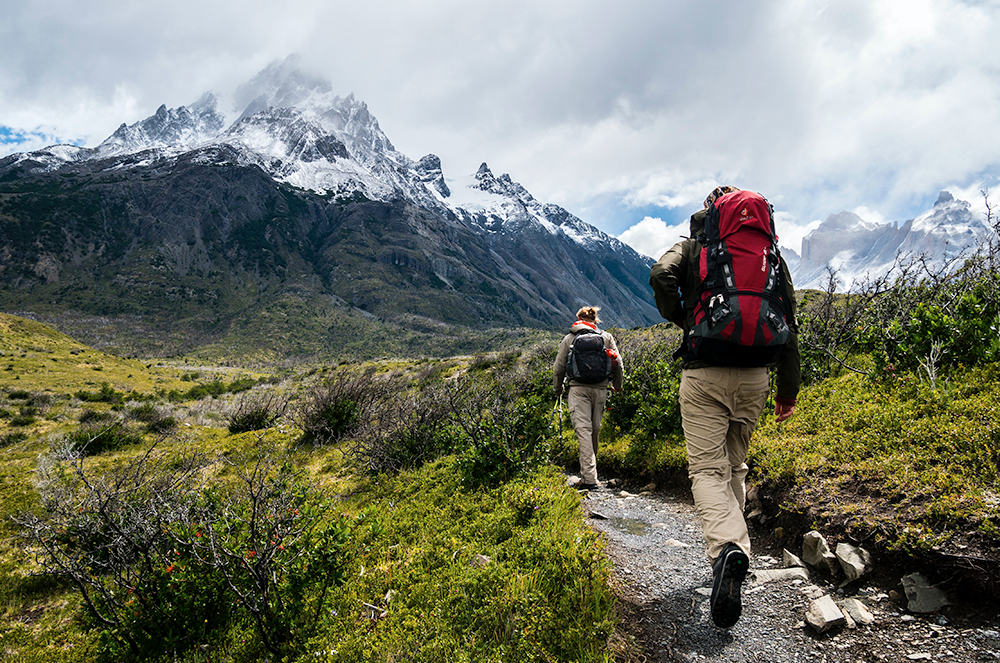Evolution of Outdoor Sports: From Survival to Thriving Adventures
The history of outdoor sports has its roots in ancient times when people lived in the wild, depending on hunting, fishing, and gathering for survival. As time passed, humans evolved to harness the natural environment for enjoyment and adventure.
In today's world, outdoor sports have evolved into a widespread cultural phenomenon, encompassing a diverse array of activities, including mountaineering, hiking, kayaking, rock climbing, skiing, mountain biking, hunting, fishing, and much more.
The key milestones in the development of outdoor sports history are as follows:
19th century: The emergence of mountaineering.

The origins of mountaineering can be traced back to the late 18th century in Europe. During that time, many were captivated by the allure of mountains, recognizing them for their breathtaking natural beauty and unique charm. Initially, mountaineering was primarily a means of exploration and hunting, but over time, it evolved into a recreational sport.
In the 19th century, mountaineering gained momentum in popularity, as enthusiasts began ascending peaks and embarking on expeditions. By the late 19th and early 20th centuries, mountaineering had rapidly grown into a beloved outdoor activity in Europe and North America.
As the mid-20th century approached, individuals started attempting even higher and more challenging peaks, such as Mount Everest in the Himalayas. Thanks to technological advancements and improvements in equipment, mountaineering gradually became safer and more accessible, drawing more and more people to explore the world of peak climbing.
Nowadays, mountaineering has blossomed into a global sport, enticing countless individuals to push their limits and uncover the splendor of nature.
Early 20th century: The advent of camping and hiking.

In the early 20th century, camping and hiking started to capture the public's imagination. These activities provided individuals with the chance to escape the hustle and bustle of the city, venture into the great outdoors, and immerse themselves in its natural beauty.
The history of camping can be traced back to ancient times when people needed to spend nights in the wild while hunting and gathering food. In the early 20th century, camping became a favored mode of travel, where adventurers would pitch tents, cook over open fires, fish, and explore the wilderness. Over time, camping equipment and techniques have seen continuous refinement and development, transforming camping into a modern and comfortable style of travel.
Nowadays, many people opt for camping as a leisure and vacation choice.

The history of hiking is also very ancient. In ancient times, people needed to walk through the wilderness to obtain food, water, and materials. In the Middle Ages, hiking began to be a way of pilgrimage, as people traveled across the European continent to visit holy sites.
By the 19th century, hiking became a popular leisure activity, with travelers often walking through mountains and forests, enjoying the natural scenery. Now, hiking has become a global travel trend, with more and more people choosing hiking as a way to enjoy outdoor activities, stay fit, and explore nature.

In the mid-20th century, surfing, skiing, and kayaking gained popularity.
In the mid-20th century, water activities like surfing, skiing, and kayaking gained popularity, offering people a taste of freedom and excitement in the water.
Surfing can be traced back to ancient Polynesia, approximately 3000 years ago, where Polynesians rode the waves using wooden boards. This practice found its way to Hawaii in the early 20th century and gradually spread globally. Today, modern surfing employs advanced equipment and techniques, drawing an ever-growing number of enthusiasts.

The history of skiing dates back to ancient Scandinavia, approximately 4000 years ago. During that era, people utilized wooden planks to glide over snow-covered terrain. With the passage of time, skiing transitioned into a sport. By the mid-20th century, skiing had become a beloved outdoor pastime. The ongoing development of modern skiing equipment and techniques has transformed it into a challenging and exhilarating sport.

Kayaking has its origins in the ancient Arctic regions, where people employed skin boats for water navigation. In the mid-20th century, kayaking gained popularity as a sport, with individuals using wooden or metal kayaks for paddling. Contemporary kayaks are crafted from lighter and more durable materials, transforming it into a high-intensity, high-speed, and technologically advanced water sport.

These three sports have undergone significant development and gained popularity in the modern world, drawing in a growing number of participants. They serve as not only a means of physical exercise but also a way to explore nature and test one's limits.
The late 20th century witnessed the rise of mountain biking and rock climbing.
In the late 20th century, mountain biking and rock climbing emerged as popular outdoor pursuits. These activities are rife with challenges and excitement, demanding a high degree of physical fitness and skill.
The roots of mountain biking can be traced back to early 20th-century California, USA, where cycling enthusiasts began using sturdier bicycles for off-road riding, driven by a desire to challenge themselves and explore the great outdoors. As technology advanced, the design and equipment of mountain bikes gradually improved, transforming it into a high-intensity, high-tech sport. Today, mountain biking has achieved widespread development and global popularity, establishing itself as a highly sought-after sporting experience.

The beginnings of rock climbing can be traced back to the early 20th century in Europe and the United States. During this period, climbing enthusiasts embarked on ascents of diverse terrains to test their abilities and savor the splendor of nature. As technology advanced, rock climbing equipment and techniques underwent gradual refinement, elevating it into a highly technical and secure sport.
Today, rock climbing has evolved into a widely popular competitive sport and an exceptionally demanding and exhilarating outdoor pursuit, drawing an ever-growing number of participants.

In essence, mountain biking and rock climbing are outdoor activities that experienced considerable growth and popularity during the early 20th century. Both of these sports necessitate a high degree of technical proficiency and skill, placing demands on one's physical and mental prowess. They encompass more than mere sports; they offer a means to explore the wonders of nature and test one's own limits.
Present Day: The broadening and widespread appeal of outdoor sports.
In today's society, there is a growing emphasis on the diversification and widespread adoption of outdoor sports. As modernization has driven people toward indoor and electronic activities in their daily lives and work, there's a heightened demand for outdoor sports.
The diversification of outdoor sports is evident in the emergence of various outdoor activities, including hiking, camping, rock climbing, skiing, cycling, water sports, and more. Furthermore, the ways people engage in outdoor sports are becoming increasingly diverse. Some opt to join outdoor sports clubs or organizations to participate alongside others, while some prefer solo outdoor adventures, relishing the serenity and natural beauty.
Simultaneously, the popularization of outdoor sports is on the rise. More individuals are recognizing the positive impact of outdoor sports on their physical and mental well-being and are taking steps to explore and enjoy them. Governments and social organizations are actively promoting outdoor sports by establishing outdoor sports parks, organizing competitions, and providing courses.
In conclusion, the diversification and popularization of outdoor sports are contemporary trends with positive effects on people's physical and mental health. In the modern era, outdoor sports have evolved to offer a wide range of options for individuals to challenge themselves and revel in the beauty and excitement of nature. Additionally, with technological advancements and improved living standards, outdoor sports equipment and techniques have seen significant progress.









